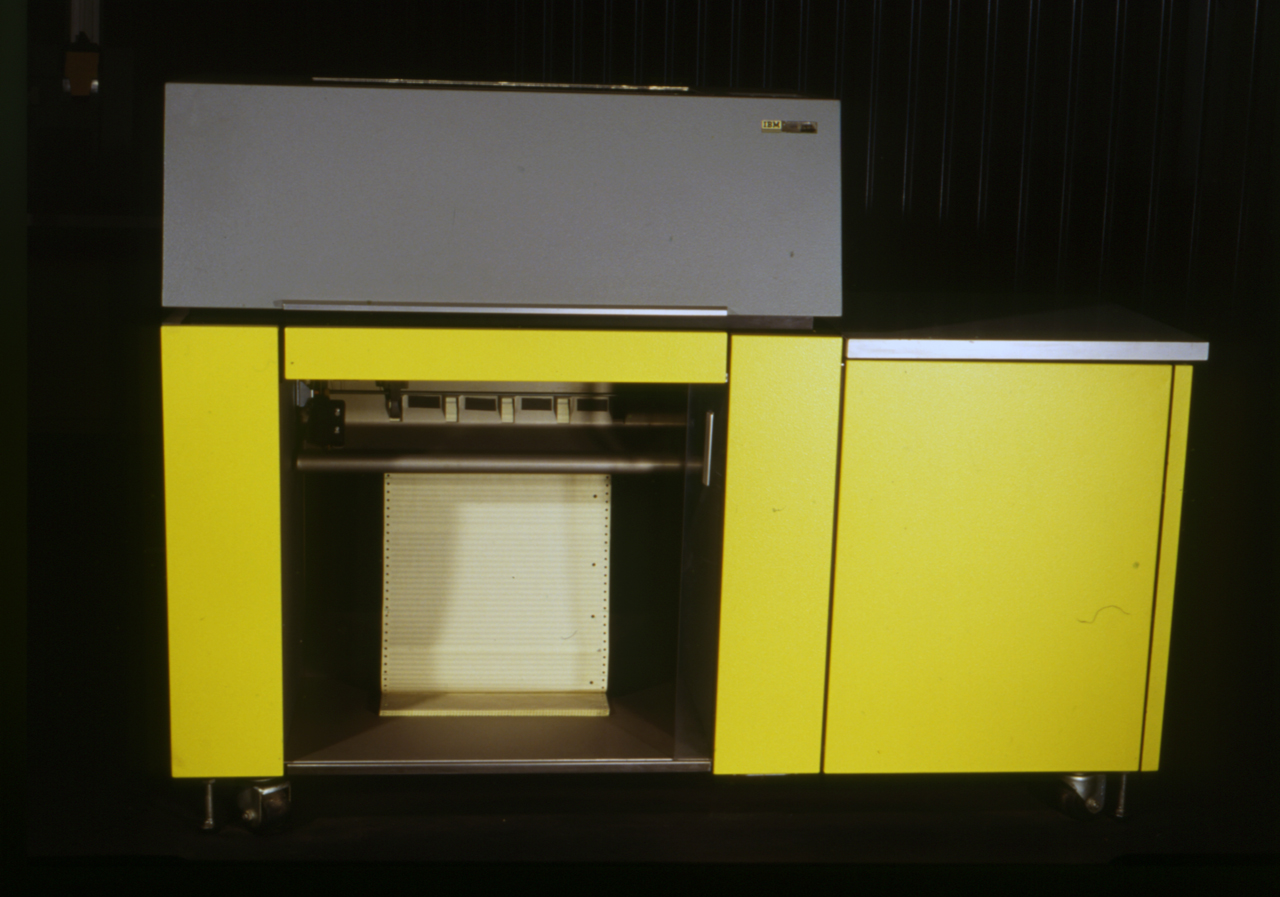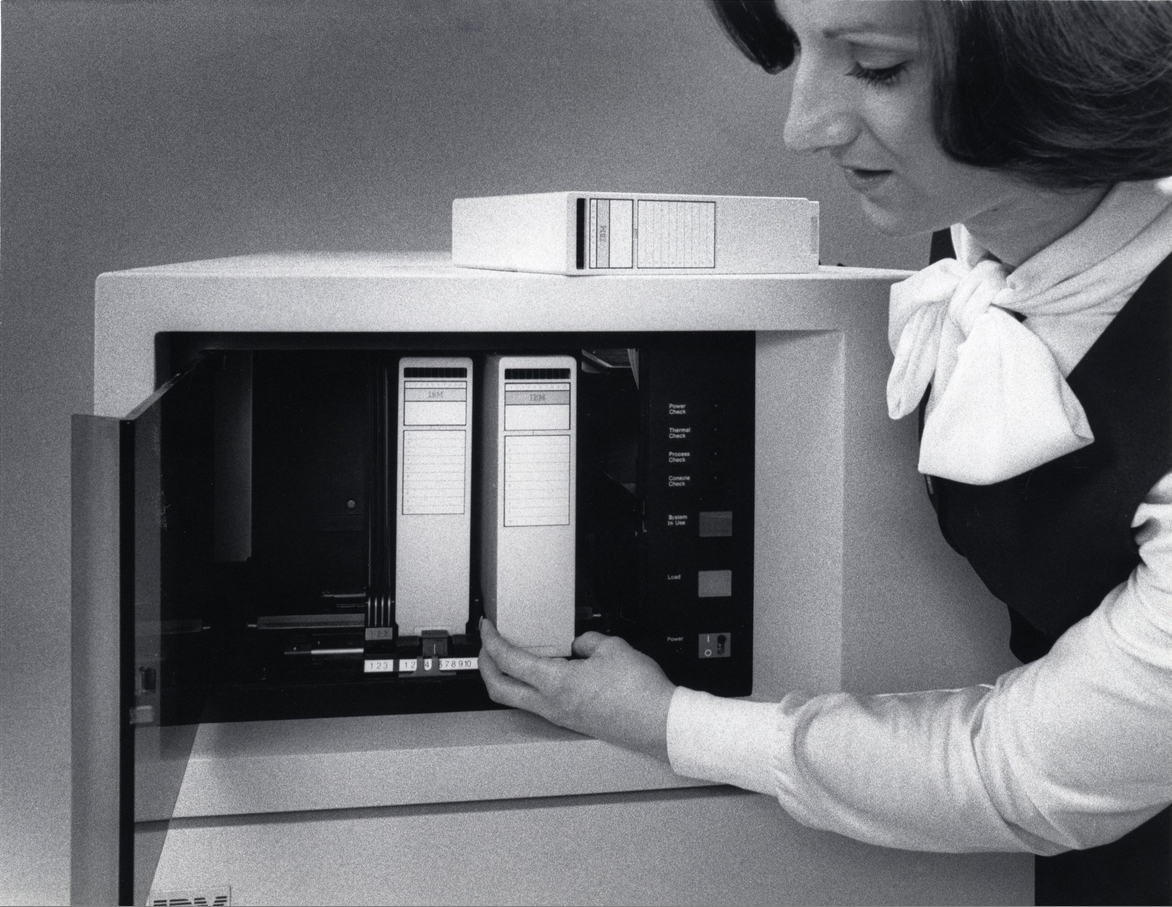|
IBM System 3
The IBM System/3 was an IBM midrange computer introduced in 1969, and marketed until 1985. It was produced by IBM Rochester in Minnesota as a low-end business computer aimed at smaller organizations that still used IBM 1400 series computers or unit record equipment. The first member of what IBM refers to as their "midrange" line, it also introduced the RPG II programming language. It is the first ancestor in the product line whose current version is the IBM i series and includes the highly successful AS/400. History At its launch in 1969 it was available for $1000/month — less than half cost of an IBM System/360 Model 20; the smallest member of the IBM System/360 family. Many of the original System/3 model 10 units were shipped diskless, with only the new IBM 5424 Multifunction Card Unit (MFCU) which read, punched, printed on and sorted the new, smaller 96-column punched cards introduced at the same time. IBM delivered the following models: * 1969 — IBM 5410, or System/3 ... [...More Info...] [...Related Items...] OR: [Wikipedia] [Google] [Baidu] |
System/38
The System/38 is a discontinued minicomputer and midrange computer manufactured and sold by IBM. The system was announced in 1978. The System/38 has 48-bit addressing, which was unique for the time, and a novel integrated database system. It was oriented toward a multi-user system environment. At the time, the typical system handled from a dozen to several dozen terminals. Although the System/38 failed to displace the systems it was intended to replace, its architecture served as the basis of the much more successful IBM AS/400. History The System/38 was introduced on October 24, 1978 and delivered in 1980. Developed under the code-name "Pacific", it was made commercially available in August 1979. The system offered a number of innovative features, and was designed by a number of engineers including Frank Soltis and Glenn Henry. The architecture shared many similarities with the design of the failed IBM Future Systems project, including the single-level store, the use of micro ... [...More Info...] [...Related Items...] OR: [Wikipedia] [Google] [Baidu] |
IBM System/32
The IBM System/32 (IBM 5320) introduced in January 1975 was a midrange computer with built-in display screen, disk drives, printer, and database report software. It was used primarily by small to midsize businesses for accounting applications. RPG II was the primary programming language for the machine. Overview The 16-bit single-user System/32, also known as the IBM 5320, was introduced in 1975, and it was the successor to the IBM System/3 model 6 in the IBM midrange computer line. IBM described it as "the first system to incorporate hardware and comprehensive application software." ''The New York Times'' described the ''32'' as "a compact computer for first‐time users with little or no computer programming experience." Within 40 months, "the System/32 had surpassed the IBM System/3 as the most installed IBM computer." The computer looked lika large office deskwith a very small six-line by forty-character display and a keyboard similar to an IBM keypunch. Having the appearan ... [...More Info...] [...Related Items...] OR: [Wikipedia] [Google] [Baidu] |
System/32
The IBM System/32 (IBM 5320) introduced in January 1975 was a midrange computer with built-in display screen, disk drives, printer, and database report software. It was used primarily by small to midsize businesses for accounting applications. RPG II was the primary programming language for the machine. Overview The 16-bit single-user System/32, also known as the IBM 5320, was introduced in 1975, and it was the successor to the IBM System/3 model 6 in the IBM midrange computer line. IBM described it as "the first system to incorporate hardware and comprehensive application software." ''The New York Times'' described the ''32'' as "a compact computer for first‐time users with little or no computer programming experience." Within 40 months, "the System/32 had surpassed the IBM System/3 as the most installed IBM computer." The computer looked lika large office deskwith a very small six-line by forty-character display and a keyboard similar to an IBM keypunch. Having the appea ... [...More Info...] [...Related Items...] OR: [Wikipedia] [Google] [Baidu] |
IBM Hammer Printers
IBM developed, manufactured and sold hammer-based impact printers that used either type bars, a chain, a train, or a band to create printed output from 1959 till 1999, replacing the older print drum technology,. Over the course of this time they produced a wide variety of these line printers. This article will detail the most significant ones. Note that while IBM initially described band printers as belt printers, they are effectively the same thing. Note the acronym lpm used throughout this article stands for lines per minute, being a measure of print speed. In general the maximum lpm for a printer is based on the use of a repeating set of 48 characters, referred to as a character set. Chain and train printers The printers are listed here in the ordered they were announced. IBM 1403 Released in 1959, the IBM 1403 Model 1 is the first hammer based printer produced by IBM. It uses type slugs on a chain and is the first IBM printer to do so. In 1967 the IBM 1403 Model ... [...More Info...] [...Related Items...] OR: [Wikipedia] [Google] [Baidu] |
IBM System/34
The IBM System/34 was an IBM midrange computer introduced in 1977. It was withdrawn from marketing in February 1985. It was a multi-user, multi-tasking successor to the single-user System/32. It included two processors, one based on the System/32 and the second based on the System/3. Like the System/32 and the System/3, the System/34 was primarily programmed in the RPG II language. Hardware The 5340 System Unit contained the processing unit, the disk storage and the diskette drive. It had several access doors on both sides. Inside, were swing-out assemblies where the circuit boards and memory cards were mounted. It weighed and used 220V power. The IBM 5250 series of terminals were the primary interface to the System/34. Processors S/34s had two processors, the Control Storage Processor (CSP), and the Main Storage Processor (MSP). The MSP was the workhorse, based on System/3 architecture; it performed the instructions in the computer programs. The CSP was the governor, a diff ... [...More Info...] [...Related Items...] OR: [Wikipedia] [Google] [Baidu] |
System/34
The IBM System/34 was an IBM midrange computer introduced in 1977. It was withdrawn from marketing in February 1985. It was a multi-user, multi-tasking successor to the single-user System/32. It included two processors, one based on the System/32 and the second based on the System/3. Like the System/32 and the System/3, the System/34 was primarily programmed in the RPG II language. Hardware The 5340 System Unit contained the processing unit, the disk storage and the diskette drive. It had several access doors on both sides. Inside, were swing-out assemblies where the circuit boards and memory cards were mounted. It weighed and used 220V power. The IBM 5250 series of terminals were the primary interface to the System/34. Processors S/34s had two processors, the Control Storage Processor (CSP), and the Main Storage Processor (MSP). The MSP was the workhorse, based on System/3 architecture; it performed the instructions in the computer programs. The CSP was the governor, a diff ... [...More Info...] [...Related Items...] OR: [Wikipedia] [Google] [Baidu] |
IBM System/360 Model 20
The IBM System/360 Model 20 is the smallest member of the IBM System/360 family announced in November 1964. The Model 20 supports only a subset of the System/360 instruction set, with binary numbers limited to 16 bits and no floating point. In later years it would have been classified as a 16-bit minicomputer rather than a mainframe, but the term "minicomputer" was not current, and in any case IBM wanted to emphasize the compatibility of the Model 20 rather than its differences from the rest of the System/360 line. It does, however, have the full System/360 decimal instruction set, that allows for addition, subtraction, product, and dividend of up to 31 decimal digits. Developed by IBM in Böblingen, Germany, the system was intended for data processing and as a replacement for tab equipment. An incompatible small computer, the IBM 1130 introduced the following year, was designed for scientific and engineering computing. The design of the Model 20 was the result of a tu ... [...More Info...] [...Related Items...] OR: [Wikipedia] [Google] [Baidu] |
System 3 Punch Card
A system is a group of interacting or interrelated elements that act according to a set of rules to form a unified whole. A system, surrounded and influenced by its environment, is described by its boundaries, structure and purpose and expressed in its functioning. Systems are the subjects of study of systems theory and other systems sciences. Systems have several common properties and characteristics, including structure, function(s), behavior and interconnectivity. Etymology The term ''system'' comes from the Latin word ''systēma'', in turn from Greek ''systēma'': "whole concept made of several parts or members, system", literary "composition"."σύστημα" Henry George Liddell, Robert Scott, '' |
IBM Mainframe
IBM mainframes are large computer systems produced by IBM since 1952. During the 1960s and 1970s, IBM dominated the large computer market. Current mainframe computers in IBM's line of business computers are developments of the basic design of the IBM System/360. First and second generation From 1952 into the late 1960s, IBM manufactured and marketed several large computer models, known as the IBM 700/7000 series. The first-generation 700s were based on vacuum tubes, while the later, second-generation 7000s used transistors. These machines established IBM's dominance in electronic data processing ("EDP"). IBM had two model categories: one (701, 704, 709, 7030, 7090, 7094, 7040, 7044) for engineering and scientific use, and one (702, 705, 705-II, 705-III, 7080, 7070, 7072, 7074, 7010) for commercial or data processing use. The two categories, scientific and commercial, generally used common peripherals but had completely different instruction sets, and there were incompatibiliti ... [...More Info...] [...Related Items...] OR: [Wikipedia] [Google] [Baidu] |
Minicomputer
A minicomputer, or colloquially mini, is a class of smaller general purpose computers that developed in the mid-1960s and sold at a much lower price than mainframe and mid-size computers from IBM and its direct competitors. In a 1970 survey, ''The New York Times'' suggested a consensus definition of a minicomputer as a machine costing less than (), with an input-output device such as a teleprinter and at least four thousand words of memory, that is capable of running programs in a higher level language, such as Fortran or BASIC. The class formed a distinct group with its own software architectures and operating systems. Minis were designed for control, instrumentation, human interaction, and communication switching as distinct from calculation and record keeping. Many were sold indirectly to original equipment manufacturers (OEMs) for final end use application. During the two decade lifetime of the minicomputer class (1965–1985), almost 100 companies formed and only a half ... [...More Info...] [...Related Items...] OR: [Wikipedia] [Google] [Baidu] |
.jpg)
.jpg)





